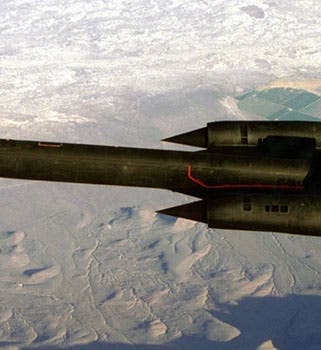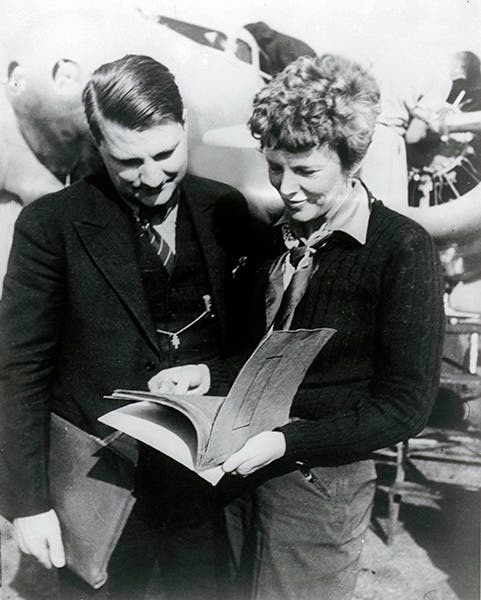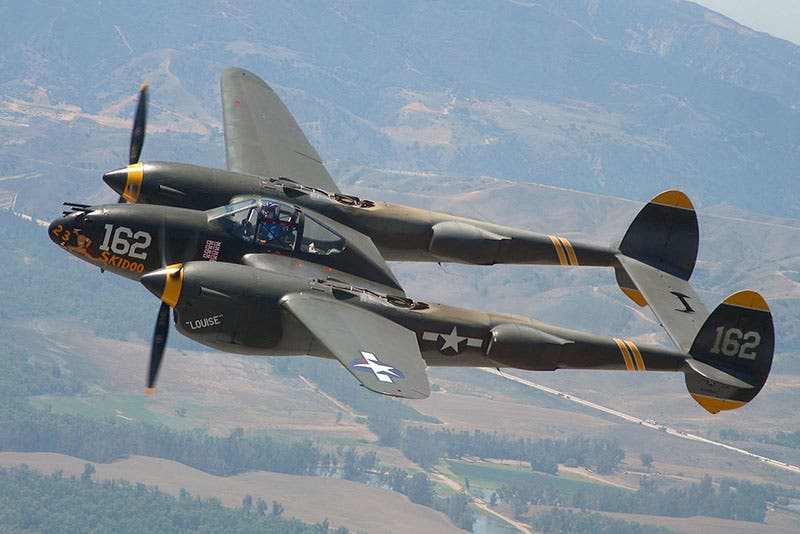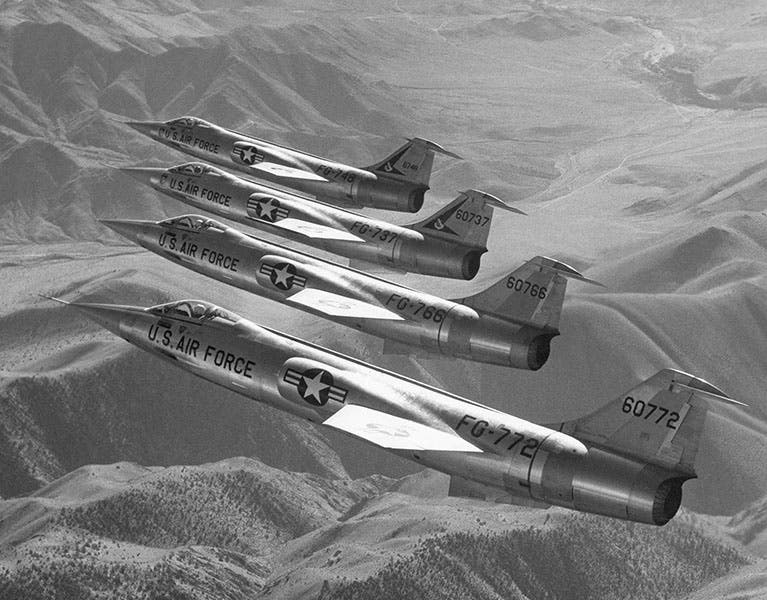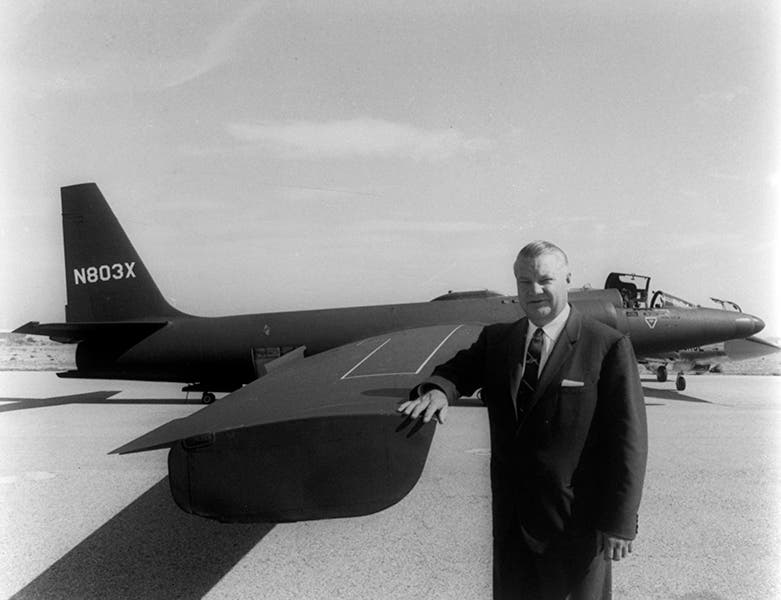Scientist of the Day - Kelly Johnson
Clarence "Kelly" Johnson, an American aeronautical engineer, was born Feb. 27, 1910. Johnson came to head up the "Skunk Works" installation and design team at Lockheed, which was given great autonomy in designing cutting-edge aircraft. Johnson is given most of the credit for designing many of Lockheed's famous aircraft, including the SR-71 Blackbird, between 1937 and his retirement in 1975. Fresh out of the University of Michigan in 1933, he was asked by Lockheed to do wind-tunnel tests on their new twin-engine Model 10 Electra, the first all-metal aircraft (second image). Johnson found the aircraft unstable and recommended that a double-tail be substituted. Surprisingly, Lockheed agreed, and Johnson’s career was off and running. In 1937, Earhart posed with Johnson (third image) and then took off in her twin-tailed Electra for her ill-fated flight around the world. The crash and disappearance of her plane is believed to be the result of fuel shortage and unrelated to the aircraft’s design.
Johnson's first real challenge came in 1937 when he was asked to design a fighter aircraft for the U.S. Army Air Corps, with the war impending. The first Lockheed P-38 Lightning rolled off the lines in 1939, with twin booms and twin stabilizers, the two engines on the booms and the crew and the guns in a separate nacelle between (fourth image). With this unusual configuration, the P-38 proved adept as a fighter, a fighter bomber, and an aerial reconnaissance aircraft. Over 10,000 were built before the end of the War in 1945.
Another superlative aircraft that Johnson designed was the Lockheed P-104, soon relabeled the F-104 Starfighter. Introduced in 1958, it was intended to be more worthy rival for the Soviet MIG-15, and it was. The F-104, powered by a single turbojet engine, was highly maneuverable and capable of reaching extreme altitude and supersonic speeds. It is also a beautiful machine. Lockheed built more than 2500 of them for a dozen different air forces. Many are still flying.
The most famous aircraft that Johnson designed were the U-2 and the SR-71. The U-2 was designed for just one purpose - to cruise at 70,000 feet, where no aircraft has any business flying, and take pictures (sixth image). To achieve this, many sacrifices were made, so that the aircraft was very difficult to fly, especially at lower altitudes, and safety margins were very slim. But it was a great spy plane, until Gary Powers and his U-2 were shot down over the Soviet Union in 1960. Lockheed continued producing U-2s until 1989, and they are still flying. Or so they tell me.
The Lockheed SR-71 Blackbird is, in most expert's opinion, the finest design of Johnson's career, and perhaps of anyone’s career (first image). Even it if didn't fly at all, it would be spectacular, because it looks like it is doing Mach 2 just sitting on the runway. The SR-71 was a reconnaissance aircraft, capable of flying at high altitude, but unlike the U-2, it was supersonic and maneuverable. You couldn’t shoot it down, even if you could find it on radar, because it could outrun anything you fired at it. To many aficionados, it is the Jaguar XK-E of aircraft – the most beautiful airplane ever built. I would not disagree. I happened to be working the flight line at Okinawa in 1968 when they brought in the first SR-71s for field testing in Vietnam. The aircraft were concealed in a special hangar and we were not allowed anywhere near them. But they couldn't hide the take-offs and landings, and they were incredibly impressive. There are many available videos of the SR-71 in action; here is one. When the SR-71 was retired in 1990 (why, one wonders?), an aircraft was flown from Los Angeles to Washington, D.C., to go on display at the Smithsonian. It flew the leg from Kansas City to Washington in 26 minutes. It takes me longer than that to get to the airport. Johnson must have had considerable chutzpah, for he decided to build the SR-71 out of titanium, a rare metal, of which Russia had almost all of the world’s supply. Somehow, he made that work. He must have been an amazing fellow. Dr. William B. Ashworth, Jr., Consultant for the History of Science, Linda Hall Library and Associate Professor emeritus, Department of History, University of Missouri-Kansas City. Comments or corrections are welcome; please direct to ashworthw@umkc.edu.

